The Hendersons
Who we are, who we were,
and one family's story
This site dedicated in loving memory to
Joseph Ralston Henderson, 1915-2010
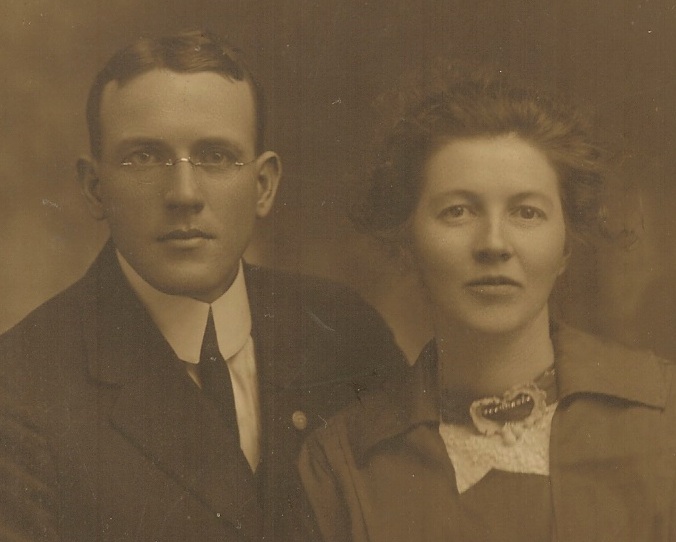
The HendersonsWho we are, who we were,
|
|
Because of my interest in heritage apple varieties, I am also including information about Henderson Lewelling, who established the first commercial orchard in the Pacific Northwest amd remarkable in quite a few other ways as well. I just can't determine why his parents gave him that name.
Digression before we even start: In my wife's lineage are Roger Toothaker, an accused witch who died in prison during the Salem witch hysteria, and several Mayflower passengers. Hey, that's pretty good, but in my own family tree is also an accused witch and the hero of an old Scots ballad (Can you be related to a fictional character?). However, none of those folks were Hendersons. As for my Henderson ancestors, as proud of them as I am, they were just ordinary folks, farmers, house carpenters, school teachers, cattle thieves, and the like.
 Although
Hendersons were found in many parts of lowland Scotland, including the
Fife peninsula and the cities of Glasgow and Edinburgh, where the
Henderson name was commonly found, the highest percentage came from
southwestern Scotland and Scottish Borders, areas that were
poverty-ravaged, beleaguered by decades of war (between both nations and
families), and filled with Presbyterian radicals. The Covenanters
were found in Perth and Fife, especially some of the ministers, but
their real heartland became the southwestern counties of Scotland.
Although
Hendersons were found in many parts of lowland Scotland, including the
Fife peninsula and the cities of Glasgow and Edinburgh, where the
Henderson name was commonly found, the highest percentage came from
southwestern Scotland and Scottish Borders, areas that were
poverty-ravaged, beleaguered by decades of war (between both nations and
families), and filled with Presbyterian radicals. The Covenanters
were found in Perth and Fife, especially some of the ministers, but
their real heartland became the southwestern counties of Scotland.N.B.: My father was convinced that our Hendersons had some connection with the Henderson family connected to Fordell Castle in Fifeshire. The closest connection I can find between the Hendersons of Fordell and Hendersons of Liddesdale is a brief and undocumented statement on a Rampant Scotland page that "the southern Hendersons spread eastwards from Dumfries to Liddesdale." Although Fordell is not in Dumfries, according to the same source, William Henrison of Dumfries was driven from his lands in the fourteenth century, and one descendant, James Henderson, established himself with a fortified mansion in Fordell in 1511.
The lineage of one Indiana County family of Hendersons has been traced back to Fordell in Fife. This is not a case of Scottish nobility coming to Pennsylvania, however. Three Scottish brothers who were at least five generations removed from the Henderson barons of Fordell, came first to Virginia from Fordell. One brother, Alexander stayed in Virginia many years before settling in Kentucky; another, William, moved around a bit before settling in North Carolina; and a third, John, moved to Pennsylvania. His son, John Washington Henderson, became a preacher, one of the first Presbyterian ministers in Westmoreland County (part of which eventually bcame Indiana County). A great nephew of his, also John Washington Henderson, born in Mahoning township in northern Indiana County, later became sheriff of Jefferson County. I have found no record that this family was in any way connected to my family. Since our Henderson ancestors emigrated from Tyrone in northern Ireland, it is not likely that they would have been related to these descendents of the castle-dwellers. However, no roots have been traced from the northern Ireland Hendersons back to Scotland.
Robert and Mary (Mary Ann Ralston) Henderson were Ulster Scots who were born sometime in the mid-1700's, in Northern Ireland, probably in Tyrone County. A family history at least indicates that Tyrone County was their home before emigrating to the United States. Almost nothing about their life in Ireland is known. They raised a family of six boys and three girls. Probably all of them were born in Ireland. According to tradition handed down through the generations, Robert took part in the Irish rebellions before coming to America. If true, Robert Henderson was possibly a member of the Society of United Irishmen, a organization that united Presbyterian dissenters in Ulster with Catholics from the south in a struggle for an independent Ireland. Inspired by the revolutionary and republican principles of the American and French Revolutions, the group was founded by Wolfe Tone in 1791. There was plenty of political ferment while the Hendersons were still in Ireland, but it was only after the Henderson family had come to America, that the Irish Rebellion of 1798 broke out. In one of the most violent and bloody wars in Irish history, as many as 30,000 men, women, and children may have been killed in the course of about three months. Rebels who were caught but not executed were deported to Australia, but there is no indication that the Hendersons left involuntarily because of Robert Henderson's involvment in rebellious activities. In a quirk of history, members of a later generation of Hendersons lived in the Vinegar Hill section of Indiana, Pa., and that hill may have been named after the site of one of the last battles of the Rebellion of 1798.
The Hendersons were probably members of the Seceders (Associate Presbyterian Church). This speculation is made based on the fact that the next generation of Henderson did not attend the Covenanter Church which was the closest Presbyterian church to them, but helped found the West Union church, which was affiliated with the Associate Reformed Presbyterian Church (which in 1782 was formed to combine the Seceders and Covenanters).
The History of Indiana County, PA, 1745-1880, published by J. A. Caldwell, Newark, OH, 1880, lists the names of their nine children. Unfortunately, it provides no dates and lists first the boys and then the girls, so even their birth order is uncertain.
No written documentation has been found to indicate from where or when the Henderson family left Ireland or whether or not they all came at the same time. Family tradition, however, tells that the family left together from Londonderry, the Presbyterian name for Derry, spent sixteen weeks crossing the Atlantic, and landed in Philadelphia probably in 1796 or 1797. Since we know that Robert and his son Alexander were naturalized as citizens, the family could not have arrived before March 4, 1789, the date that the United States Constitution took effect. Information provided in Caldwell's History of Indiana County (1880) is inexact: "Alexander Henderson was a son of Robert and Mary, nee Ralston, natives of Ireland, who settled about 1796 on what is now the Frank Cribbs farm, Young Township." Records provided by Harry Danner Henderson of Potosi, WI (original source unknown) indicate that two of Robert and Mary's sons, John and Robert, Jr., sailed to America on March 26, 1797, the day after John married Letitia Fullerton, and settled in Conemaugh Township (Saltsburg area of Indiana County). A confused record in The History of Marion County Ohio (1883), indicates that David Henderson, [oldest son of Robert and Mary Ann], and his wife, Elizabeth (Orr) Henderson, "natives of County Tyrone, Ireland, ... emigrated to America in 1791, settling at Shippensburg, Penn., early pioneers. Later, they came to Clarksburg, Ind[iana County, Penn.], remaining a number years, thence came to Marion County, but he died in Delaware, Ohio, in 1834, aged eighty-seven years." Several years ago, researchers Scott & Kathryn Ives informed me that David's dates are probably wrong, since if the Marian History is accurate, he would be a quarter of a century older than the next of his siblings. If the birth date is wrong, the emigration date must also be held in question. However, if either of these two latter accounts is accurate, members of the Henderson family might have traveled across the Atlantic separately over the course of a decade.
The Hendersons were not Indian-fighting frontier settlers. They came toward the end of the wave of the great Scotch Irish migration to America, and they were part of the migration to Western Pennsylvania that occurred after the end of Indian/settler hostilities. Mad Anthony Wayne's troops decisive victory against the Iroquois at the Battle of Fallen Timbers (August 1794) led to the signing of the Treaty of Canandaigua and the Treaty of Greenville (both 1795). These treaties opened up a region which included all of western Pennsylvania to settlement without the threat of Indian resistance.
We have almost no information about the Henderson family's journey to America and what it did before it settled in what is now Indiana County. If the Hendersons followed the usual pattern of settlers at that time, they would have made the move for western Pennsylvania very shortly after the family arrived in the country. The family would have traveled along the public roads, using a wagon. The route they likely would have followed was not far removed from the Pennsylvania Turnpike today. The road went from Philadelphia to Lancaster, through Gettysburg, down into Maryland, and back into Pittsburgh. The Hendersons, without much doubt, would have bought their land from a land company. Land speculators had long before purchased rights to the lands that had been provided to soldiers after the Revolutionary War in lieu of other payment. Now that the land was free of Indian claims and hostilities, the land market became very profitable. Most likely, the Hendersons would have dealt with a land merchant and outfitter in Pittsburgh to acquire the deed and goods to settle it.
The next date in the life of Robert Henderson that is recorded is September, 1809, when he was naturalized as a citizen. Robert died in either 1813 or 1814. The date of Mary Ralston Henderson's death is not recorded. For many years the location of the actual gravesites of Robert and Mary Henderson were unknown. Information provided by Harry Danner Henderson, which at this writing has not been verified, indicates that Robert and Mary were buried in the graveyard of Old Congruity Church, about twelve miles from Saltsburg, across the river in what is now Westmoreland County. Evidence supporting this idea is that the Old Congruity Church was founded as an Associate Reformed Presbyterian Church, and there was no other Associate Reformed Church in the area until the West Union Associate Reform Church was founded (in part by members of the Henderson family).
First here is summary information about all the children of Robert and Mary Ann Ralston Henderson, derived mostly from as compiled by Scott and Kathryn Ives in a genealogical site no longer publically available.
David (17??-1834) -- not likely born in 1747 as one
historical record indicates, possibly 1776 or 1782, as other records
indicate.
Born in County Tyrone, Ireland; died in Delaware County, Ohio.
Married Elizabeth (or Elisabeth) Orr
Known Children: Robert
John (1772-1844)
Born in County Tyrone; died in Pennsylvania.
Married Letitia Fullerton (1777-1858), who was also born in Ireland.
Family lore holds that John and Letitia were married immediately before
they left Ireland for Pennsylvania.
Children: Samuel, Mary, Jane, Lucy, Robert, James, Joseph, Letitia, David,
William, Andrew, Alexander, Elizabeth
James (dates unknown)
Born in County Tyrone
Married Jane Andrews
Children: unknown
Joseph (1780-1844)
Born in County Tyrone; died on 26 August 1844 in Elder's Ridge, Pa.
Married Mary (Polly) McComb (1794-1871), daughter of James McComb
(1758-1814) & Nancy Agnes Jack (1764-1833).
[A family story digression: James McComb came to America from Ireland when
he was about 18 years old. Soon after moving into the wilds of
Pennsylvania, he was captured by Indians. He was able to escape by
stealing a canoe and almost immediately enlisted as a private in Captain
Thomas Askey's Company (1st; Fannett Township) of the 1st Pennsylvania
Militia Battalion (Cumberland County) and rose to the rank of Colonel.
After the war, McComb moved further west in Pennsylvania and became one of
the first settlers of Blacklick Township, which is now in Indiana County,
and one of the first Elders of Bethel Presbyterian Church (near
Jacksonville, Pa.). He was elected to the state Legislature and served for
13 years. During the War of 1812, he served as Brigidier General of the
Second Brigade of the Fifteenth Division of the Pennsylvania Militia. The
division served for three months near Erie and Buffalo, but it is not at
all clear that it saw any action.]
Children: Robert Ralston (b. 1819), Jane McKnight (1821-1895), Joseph (b.
1823), James McComb (1824-1868), John Fullerton (1826-1911), David Laird
M. (b. 1829), Mary Ann (1832-1906), Lucinda Smith (b. 1834), Nancy Jack
McComb (b. 1837)
Robert (1782-1871)
Born in County Tyrone; died in 1871 in Saltsburgh, Pa.
Married Francis [or Margaret] Graham (1789?-1864)
Children: Mary Ann (married Robert McMeans); Eliza (married James
Carothers); Jane (married D. K. Daugherty); Isabelle; Joseph
A. (married Julia A. Wilson); Margaret G. (married Rev. Andrew Getty);
Lucinda F.; and Sarah R. (married John Longwill).
Reported to have fought in the War of 1812.
Alexander (1784-1844)
Born in County Tyrone; died in Clarksburg, Pa. (buried in West Union
Cemetery).
Married Hannah Thorne on 2 February 1809. Hannah was born about 1780 and
died in Clarksburg in August 1844. Her father was probably Josesph Thorne,
who was living in Derry Township, Westmoreland County, in 1790. She is
also buried in the West Union Cemetery.
Children: Mary (1809-1883), Robert (1811-1852), Matilda (1813-1855),
Margaret (1816-1893)
Jane (dates unknown)
Born in County Tyrone; died after 1850 but before 1860, based on Census
records.
Married Thomas Hood (b. 1783 in Ireland, d. before 1860)
Children: James, Robert, Mary, Veniza, Thomas C., Jane
Note: The Hood farm neighbored the Henderson farm in Young Township and is
now owned by a Henderson cousin of mine.
Isabella (dates unknown)
Born in County Tyrone.
Married Edward McKelvey
Known children: Mary (b. 1796), married Alexander Nesbit (b. 1799)
Lucy (dates unknown)
Born in County Tyrone.
Married James Smith.
Note: It is believed that a son of the Smiths gave land to his cousin
Robert Henderson in exchange for his building them a house.
More about Alexander:
Alexander took over the family farm (the same farm later sold to Frank Cribbs as mentioned in Caldwell's History). Alexander was born in 1784; since the dates of birth of most of his other of his siblings are unknown to us, we don't know for sure where in the family order he comes. It is likely that he came over from Ireland to the United States with the rest of his family in 1796 or 1797. Tradition tells us that he had a reputation for being a hard-working and successful farmer. He was married to Hanna Thorne on February 2, 1809, by the Rev. Joseph Henderson [a relation?]. Hanna was 29 years old (five years older than Alexander) at the time of their marriage. Alexander became a naturalized citizen in December 1811, two years after his father. Robert, Alexander's father, lived with his son on the old farm until his death, according to John G. Henderson, Sr., great grandson of Alexander. Alexander and Hanna had three daughters and one son, Robert. Originally members of the Reformed Presbyterian (Coventer) Church in the village of Clarksburg, both husband and wife were among the founders of the West Union Associate Reformed Presbyterian Church. Alexander and Hanna died within one week of each other in August, 1844. He was 60; she was 65. Both are buried in the West Union cemetery.
Alexander and Hanna had three daughters and one son. Mary (1809-1883) married John Robertson. Robert (1811-1852) married Martha Henry, Matilda (1813-1855) married Samuel McLaughlin, Margaret (1816-1893) married John Rosborough.
Alexander and Hanna's son Robert was born on October 2, 1811, on the Clarksburg farm. When he was twenty, he married Martha Henry. Martha's parents were Robert Henry and Martha McKesson Henry. Although Martha had no formal education, she was self-educated and became known as the "scholar of the family." Originally both Robert and Martha were members of the Covenanter Church in Clarksburg, which her father had been instrumental in founding as one of its first elders, when Clarksburg was still called Blacklegs. When her husband Robert started attending the newly formed Associate Reformed Presbyterian in West Union that his family had helped found, Martha continued to attend the Covenanter Church in Clarksburg. Only several years later, after the Covenanter Church in Clarksburg dissolved, did Martha start attending the West Union Church.
A history of the Covenanter Church in Clarksburg (no longer available online) lists several members of the Henry and Henderson family in its original 1831 roll: Robert Henry, Moses Thompson, David Henderson, Robert Henderson, Alexander Henderson, John Coleman, Robert Coleman, William Coleman, James Gray, Thomas Gailey, James Gailey, Miss Ann Gailey, John Henry, Mrs. Margaret Henry, Andrew McCreery, Samuel McCreery, Miss Jane McCreery, Daniel Euwer, Samuel Gilmore, Nancy White, John McCurdy, John Morrison, Thomas Gemmil, Miss Jane McKelvey, Mrs. Martha Smith, Nathan Douthett, Samuel Barr, Mrs. Francis Barr, John Kirkpatrick, Mrs. Kirkpartick and Mrs. Kimbal.
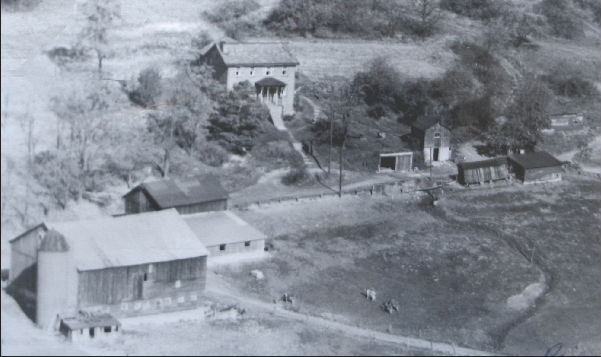 Robert
did
some farming, but his principle occupation was building houses. He
specialized in brick houses and made his own bricks. He may have learned
his trade from his father, but this is not known for sure. After he had
made several brick houses in the area, he made an agreement with the
Smiths (a cousin who was the son of his aunt Lucy) to build a brick house
for them in exchange for 100 acres (which was half of their property) in
Young Township near Elder's Ridge. The Smiths had been living in a log
house which was on the half of their property that was deeded to Robert
Henderson, so when the Smiths moved out of the log house, Robert and
Martha sold their old homestead to the Cribbs, and moved in the old Smith
place. The new living quarters were supposed to be temporary, until Robert
could build a brick house for his family. Before he could work on his own
house, he was hired to build a brick house for the Hood family on a
neighboring farm. About this time, however, Robert became sick with what
was called galloping consumption, probably tuberculosis or some kind of
pneumonia. After making the bricks, he became too sick to build the house.
The Hoods had to hire another builder, who constructed a frame house for
them. Robert's ill health became chronic, but after his health improved
somewhat, he was able to use the bricks originally made for the Hood house
to construct his own house. The house was built on higher ground, where it
was though to be healthier, even though the log house was in a "favorable"
location near a spring. There are stories of the log house having "running
water" -- probably a springhouse trough that ran through the basement of
house. The brick house was completed in 1850. Two years later, Robert
died. The Henderson, Smith, and Hood houses can all be seen on a plat map
of Young Township, Indiana County, Pennsylvania, dated 1870. The houses
are near the western border with Armstrong County just north of the
boundary line between the Watson and Elders Ridge districts.
Robert
did
some farming, but his principle occupation was building houses. He
specialized in brick houses and made his own bricks. He may have learned
his trade from his father, but this is not known for sure. After he had
made several brick houses in the area, he made an agreement with the
Smiths (a cousin who was the son of his aunt Lucy) to build a brick house
for them in exchange for 100 acres (which was half of their property) in
Young Township near Elder's Ridge. The Smiths had been living in a log
house which was on the half of their property that was deeded to Robert
Henderson, so when the Smiths moved out of the log house, Robert and
Martha sold their old homestead to the Cribbs, and moved in the old Smith
place. The new living quarters were supposed to be temporary, until Robert
could build a brick house for his family. Before he could work on his own
house, he was hired to build a brick house for the Hood family on a
neighboring farm. About this time, however, Robert became sick with what
was called galloping consumption, probably tuberculosis or some kind of
pneumonia. After making the bricks, he became too sick to build the house.
The Hoods had to hire another builder, who constructed a frame house for
them. Robert's ill health became chronic, but after his health improved
somewhat, he was able to use the bricks originally made for the Hood house
to construct his own house. The house was built on higher ground, where it
was though to be healthier, even though the log house was in a "favorable"
location near a spring. There are stories of the log house having "running
water" -- probably a springhouse trough that ran through the basement of
house. The brick house was completed in 1850. Two years later, Robert
died. The Henderson, Smith, and Hood houses can all be seen on a plat map
of Young Township, Indiana County, Pennsylvania, dated 1870. The houses
are near the western border with Armstrong County just north of the
boundary line between the Watson and Elders Ridge districts.
Martha was left with four boys to raise (one child had died in infancy) and a farm to run. As her granddaughter Ethel indicated, she must have been a strong woman. Unusual for a woman at the time, she plowed the fields herself. Perhaps less unusual she smoked a pipe. She was also known for being strict, domineering, and hard to get along with. Her church going independence was one indication. Her relationships with her sons was another. Family lore says her eldest son moved away to Kansas as soon as he was old enough to do so. After the Civil War, her sons John and James almost immediately left home and moved out to what is now College Springs, Iowa, in the southwestern part of the state. The two brothers were part of a large group who followed a preacher from either the Olivet or the West Union Church (or perhaps both). Family tradition says that it was a group of sixteen young men. My grandfather used to recite their names. Many of them may have been comrades in Company D of the 62d Pennsylvania Volunteer Infantry. Another source indicates that 40 people in all, including single young men and some families, were part of the migration.
The children (all sons) of Robert and Martha:
Portraits of three brothers:


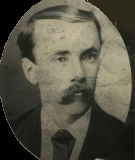
Robert Alexander
John
Joseph
Henry
Martha's youngest son was Joseph Henry. He was fourteen years old when the civil war began. He stayed at home through the war years and beyond, working the farm. Although the youngest, since all his brothers moved west or died in the war, Joseph took over the farm. In the 1870 Census Martha was listed as the head of the household, with Joseph listed as son. He married Jennie (Prudence Jane) Telford two days before Christmas in 1874. He was 27; she was 23.
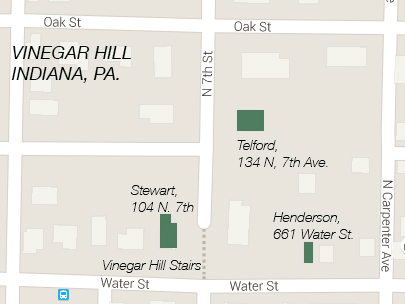 After
the marriage of her son, when Jennie moved into the brick house, Martha
moved out into the old log house. There she shared the quarters with a
servant, Liza Been (Been, according to the 1860 and 1870 Census, but my
father thought she spelled her name Bean). Liza was known as quite a
character, an old maid, but she was hard working and also known for being
"a good person to have around." Martha lived another 19 years, continuing
to help with the farm work until the end. She died at aged 86 in 1893 and
was buried in the West Union Cemetery. Liza Bean stayed on the farm after
Martha's death and later took care of Jennie when she took ill.
After
the marriage of her son, when Jennie moved into the brick house, Martha
moved out into the old log house. There she shared the quarters with a
servant, Liza Been (Been, according to the 1860 and 1870 Census, but my
father thought she spelled her name Bean). Liza was known as quite a
character, an old maid, but she was hard working and also known for being
"a good person to have around." Martha lived another 19 years, continuing
to help with the farm work until the end. She died at aged 86 in 1893 and
was buried in the West Union Cemetery. Liza Bean stayed on the farm after
Martha's death and later took care of Jennie when she took ill.
Because his wife was the daughter of a preacher and sister to a preacher and a lawyer, Joseph Henry Henderson seemed to have felt the need to prove that farming was a profession equal to the others. He advocated scientific farming, built the first silo in Indiana County, and acquired a herd of registered Guernsey cows -- the westernmost herd in North America at the time. He also planted and maintained an apple orchard of 100 trees. They had eleven children, and all who survived childhood not only received a high school education at Elders Ridge Academy, but went on to some higher education.
After the death of Joseph Henry Henderson in 1913, John, the third son, took over the farm, since his oldest brother had moved to Washington State and his next older brother had become a banker. When John married Kate in 1914, Jenny and her oldest daughter Mabel moved into the city of Indiana. They lived at 661 Water Street in a home that was given to Jenny by her brother Stephen James Telford, the judge, who lived two houses away. This was the Vinegar Hill section of Indiana. One of their other neighbors was Alex Stewart, who owned a hardware store. The Stewarts had a rather famous son, Jimmy Stewart, the actor.
The children of Joseph and Jenny:
Railroad Man Dies In Collision Of Train, EngineEva Belle Henderson Miller b: September 1881; d: 15 October 1970. She moved to Idaho. Her husband was Curtis J. Miller, and they had two daughters, Ruth and Maxine. Eva's name was pronounced with a short E, like the ev in "seven", not the ev in "evil".
Spokane, Wash., Feb. 26. (AP) C. T. Henderson, Spokane railroad engineer, was killed and two passengers were hospitalized at Colfax as a result of a collision between a Northern Pacific passenger train and a light engine near Oakesdale, railroad officials reported here today. Injured were Budge Eller, 36, Spokane, arm and head injuries, and Mrs. Harry F. J. Schilling, Lewiston, Idaho, head injuries. Seven other passengers were treated for minor bruises and shock.Cause of the accident was not immediately reported. The train was bound from Spokane to Lewiston, Idaho.
Portraits of nine siblings:
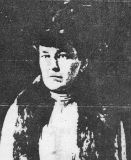 |
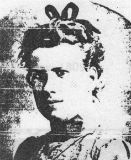 |
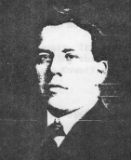 |
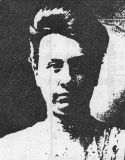 |
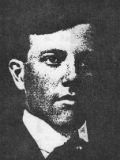 |
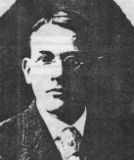 |
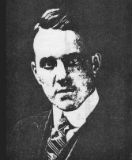 |
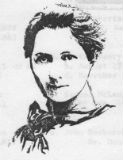 |
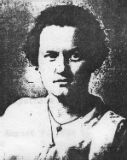 |
| Mabel | Dessie | Cree | Eva | Robert | John | Harry | Ethel | Helen |
Two of Joseph and Jenny's sons, Harry Oram and John Gordon were close in age. They traded turns going to the agricultural college at Penn State. After each had received two years of schooling, the brothers decided that Harry was better fitted to continue at Penn State and John was better fitted to take over the family farm. Harry O. Henderson, went on to earn a doctorate in dairy science, wrote a standard textbook in the field, and was head of the dairy program at West Virginia State University.
John Gordon Henderson was born in 1886. He married Sara (I have also seen it spelled Sarah) Kathryn Holstein. Kathryn, better known as Kate, was a loving women, but one of her daughters informed me that unlike her husband who teased and joked a lot, Kathryn did not exhibit a broad sense of humor. It was probably not amusing to her if someone pointed out that a Guernsey farmer married a Holstein. As a student at Penn State, just before he got married, John had a role in the evolution of ice cream. He maintained a dairy farm, delivering milk to the nearby mining town of Iselin, through the depression and more prosperous times. He also maintained and added to his fathers apple orchard.
The youngest members of the descendents of Robert and Mary Ann Ralston Henderson are members of the ninth generation, and among them are four who are the seventh generation of Hendersons to live at Richland, the Henderson family farm. The old farm house in the picture above has been torn down, but other buildings in that farm portrait are still standing. The Henderson clan in its recent generations has extanded from coast to coast and even as far away as India.
For privacy concerns of living persons, the family tree ends here.
Henderson Lewelling was one remarkable individual, involved in horticulture, the abolitionist movement, and utopianism, so I hope he was named for a direct Henderson relative. Unfortunately, I can't document any connection. His mother's maiden name was Jane Brookshire, but the names of his grandmothers are unknown, but at least some of them were from Wales, not Scotland. There were Hendersons among the Friends community of Randolph County, NC, where Henderson Lewelling was born, but whether they were friends or relatives is unknown.
Henderson Lewelling was born on 23 Fourth (April) 1809, according to Quaker birth records. His family opposed slavery and either found life in North Carolina uncomfortable or were pulled by the desire to move West. In 1825, his family, led by his father Meshack (his uncles were Shadrach, and Abednego) was one of several Quaker families to move to Indiana. While living in Duck Creek, Henry County, Indiana, Henderson married Elizabeth Pressnall on 13 Twelfth [December] 1830. After about ten years of residence in Indiana, most of the extended family moved to Iowa, where they helped establish a new Quaker-filled community of Salem. The Lewelling family became successful in establishing a merchantile store, orchard, and nursery. Henderson Lewelling was also prominent (in the secretive way he needed to be) in the Underground Railroad. The Friends community of Salem disagreed over the issue of abolition. They agreed in their oppostion to slavery, but they disagreed on how active to fight for ending it. The Lewellings were among 50 members to be disfellowshiped for advocating activism.
According to Lewelling's son Alfred, who was 16 when the family made the trek, it was early in April of 1847 that the Lewelling family headed off by covered wagon along the Oregon Trail all the way to the Pacific Ocean. It was one of the most unusual pioneer journeys ever recorded. Two wagons held the family of ten (Henderson, his wife Elizabeth, five daughters, and three sons) and all their earthly possessions. The third wagon had been specially designed by Lewelling and built with two long wagon boxes that held between 800 and 900 fruit and nut trees that were one year old from the graft. A more commonly reported number is 700, but I'd like to believe the word of the son who was there. The boxes had been filled twelve inches deep with pulverized charcoal, composted manure, and soil. A light framework was built over each box in order to protect the tender trees from injury.
The fruit tree inventory included apples, pears, peaches, cherries, quince, walnut, and hickory. There were also grape vines and currant and gooseberry bushes. These were the varieties that were recorded by Henderson Lewelling:
|
Apples
|
Pears
|
Cherries
Peaches
*The label was missing, so Lewelling named the cherry Royal Anne. Later it was determined to have been a Napoleon cherry tree, but by that time the Royal Anne was well established. Another variation on the name was Queen Anne. |
The family started as part of a caravan of seven wagons (One source claims there were more than 100 wagons), but the wagon train soon left them behind. The cumbersome, heavy-loaded nursery wagon, pulled by three yoke of oxen, was slow, and the plants required daily time-consuming attention. The family joined up with other wagon trains along the way, but usually only for a few days, so the Lewellings ended up traveling on their own. The trip west took seven months, and only on the best days did the wagons travel as many as fifteen miles. Toward the end of the journey, so the tale goes, a miracle saved the lives of the Lewelling party. There was a war going on in the Oregon Territory between the United States and the Cayuse, or Liksiyu, people. The hostilities broke out because of tensions brought on by arrival of thousands of new settlers whom the Cayuse thought were desecrating the land. A family of missionaries living near The Dalles was massacred in revenge for a doctor spreading a measles epidemic, or so it was believed. The Dalles is a section of the Columbia River bordered by steep cliffs where the Oregon Trail came to an end, and the massacre had occured only a very short time before the Lewelling family approached that part of the country. However, when a Cayuse war party started an attack on the Lewelling wagon train, they suddenly turned peaceful. Henderson's daughter Eliza, many years later, supplied an explanation. The Cayuse believed that the Great Spirit lived in trees and when they saw the wagon full of trees, they thought that this group of settlers should not be harmed. The Indians even helped these settlers complete their journey safely. The transfer of all those trees across the Columbia River was no easy task, but Henderson Lewelling and family and trees eventually arrived in yet another community Lewelling helped establish, Milwaukie.
Llewelling, with a partner and son-in-law William Meek, established the first commercial orchard in the Pacific Northwest, and the grafted trees they sold helped establish orchards throughout Oregon and Washington. To get an idea of his success, within a few years, the partnership had sold more than 100,000 trees at the price of $1.00 to $1.50. The California Gold Rush lured Lewelling from Oregon, but as a market for fruit, not for the gold. He sold his enterprise and holdings in Oregon and moved to Alameda County, California. William Meek moved south as well. Henderson's brother Seth took over the nursery. After a new cherry variety was discovered, thought to have grown from seed that had been planted by Henderson, Seth Llewelling had it cultivated further. He named it for the orchard formam, a Chinese immigrant who may have been the first to notice it or may have been essential in the first tree's further propagation. The Bing cherry became immediately popular, and for many decades has been the most produced sweet cherry variety in the United States. The naming of the cherry to honor a Chinese immigrant, especially in that time period, says much about the character and principles of that Quaker family. To do so was shockingly just, egalitarian, and open-minded.
After the gold rush had died down and California settlement became more permanent, Henderson Llewelling helped establish yet one more community -- Fruitvale. The community was established in 1854, and Henderson Llewelling, his brother and sons, and his son-in-law all made themselves another fortune.
Lewelling's story doesn't end there, however. While they were living in Oregon, his first wife died in childbirth. It would have been their eleventh
child. It is speculated that something then changed in Henderson Lewelling.
In California, he took on a series of new wives in rather rapid succession.
It is not clear how legal the marriages were or how they ended. He was on
his fourth wife, when Lewelling came up with a new idea. He decided to
establish a utopian community based on a combination of Quaker principles,
spiritualism, vegetariansim, naturism (at least occasional nudism), and free
love. He sold his orchard and business and most of his property to raise
funds for the enterprise. In 1859, he sailed with about 30 eager colonists.
The departure was wondrously scandalous. The company of travellers included
a couple of his sons and his housekeeper, but not his wife. According to a San
Francisco Times article that was based on reports of returning crew
members of the schooner Santiago, that had been purchased and fitted
out by Lewelling for the Free Lovers, the ship left San Francisco at
midnight on the 5th of October with ten men, five women and six or seven
children. For several days, additional passengers who had "peculiar
difficulties in getting away" were able to board. One of the men, whom bill
collectors were after, "actually concealed himself...under the hoops and
petticoats of Mrs. B." One couple was delayed when their 17-year old
daughter refused to join them. Henderson Lewelling was the last to board the
ship before it headed out to sea. He did so furtively, successfully escaping
both wife and incarceration. His wife was in the process of having the
courts declare Lewelling a lunatic. The society of Free Lovers, known as the
Harmonial Brotherhood, failed almost before the ship reached Honduras.
Quarrels and fights broke out almost immediately aboard ship, and factions formed. An "egg war" started at a stop in Mexico when the same eggs were sold to two different men. Both women and men were observed by crew members to secretly drink forbidden coffee and tea and eat salt pork. Once in Honduras many of the community failed to adjust to the unfavorable climate, caught fevers, got sick, and died. In 1860, Lewelling returned to California in poverty.
He lived another 18 years, in obscurity, apparently far removed from the
fruit and orchard business, possibly estranged from family, and perhaps
crazy. The next recorded event in his life was his death by a heart attack while he was clearing brush. Thus a sad end to a remarkable man who deserves a place among the Hendersons.
Note about the spelling of Henderson's surname: His son Alfred told an interviewer that the original Welsh spelling of Luelling was changed to Lewelling after the family arrived in North Carolina.
Henderson is reported to have spelled his name Lewelling all of his life, but his gravestone spells it Luelling. It might be attributed to a gravestone. His first wife, buried in Oregon many years earlier, had Luelling on her gravestone, as well. Seth used the Luelling spelling on nursery catalogs, but used different spellings in different times of his life. Alfred used Luelling.
The great great grandmother of John G. Henderson was Martha Tilford, who was accused of being a witch in Salem, New York. She and her husband, George Telford were born in Liddesdale, which is a particularly stark, bleak part of the westernmost Scottish Middle Marches. The area was famed as the home of the worst of the Border reivers. George MacDonald Fraser, in his book The Steel Bonnets, called Liddesdale the "cockpit of the the Border and home of its most predatory clans." Liddesdale was the locale of an old ballad, "Jamie Telfer in the Fair Dodhead," Child 190.* Was Jamie Telfer the ancestor of Martha Tilford, George Telford, or both? The Oxford Dictionary of Surnames indicates that Telfer has many variant spellings including Telford, Tilford, Telfair, Tolver, Tailleferre, and Tulliver.
There is no evidence outside the ballad of an historical Jamie Telfer, but ballad singer and scholar Andrew Calhoun is certain there was an historical Jamie Telfer. Landmarks of Liddesdale are featured prominently in the ballad, and other individuals mentioned in the ballad are historical figures from the time of the 1580s, including the Captain of Bewcastle; Martin Elliot; "Auld Buccleugh" of Branxholme Hall, whose real name was Walter Scott, an ancestor of the poet and novelist); and a Martin's Gibb (Martin's Hab in the ballad). If Jamie Telfer had his cattle stolen in 1580, that's about the right amount of time for George Telford to be Jamie Telfer's great grandson. So my great grandmother's great grandfather's great grandfather could be the hero of the ballad, fictionalized, if not fictional.
The ballad extends through 41 verses (more or less depending on the version), but in a nutshell, it tells the tale of poor Jamie whose ten cattle are stolen by the wicked English Captain of Bewcastle. Jamie threatens to take revenge against the Captain of Bewcastle. The captain laughs at him, since Jamie's only weapon is an "auld sword without a scabbard that scarcely now would fell a mouse." Jamie then runs on foot [barefoot in one version] through the snow to seek the aid of the local powerful protector. When the first protector rejects him because Jamie hasn't been paying him blackmail, Jamie then go to a rival protector as well as his brother-in-law and some other neighbors. The band of Scots eventually battle the English enemy, killing fifteen of English soldiers and injuring the Captain in a place in his anatomy that had he lived a hundred years he would never be loved by woman again [one version has him shot through the head, but continues to speak in the very next verse]. The bottomline was that in exchange for the ten cattle Jamie had stolen, the Scots took back for him thirty and three. Lovely, eh?
Sir Walter Scott has been accused of altering the ballad from the
original to make his family appear to be the heroes. In another version of
the ballad, the head of the Scot family refuses Jamie for his failure to
pay blackmail, and it is the Elliots who come to his aid. In Scott's
version, it was the Eliots who refused Jamie, and the Scots who rode with
him against the English. Andrew Lang, in 1910, concluded that which
version of the story was in the original remains unknown, but that
"absolute proof that Scott did, or did not, pervert the ballad, and turn a
false Elliot into a false Scott version, cannot be obtained unless new
documents bearing on the matter are discovered." Andrew Calhoun, who cites
Scott's other known other perversions of ballads altered for his own
purposes, is certain Scott's version is not the original.
In case you wish to visit the home of a fictional or actual relative, there is also some question about what and where the Dodhead was. Scott places the Dodhead at a "near Singlee, in Ettrick," but Andrew Lang, in his notes of the ballad, says Scott is wrong and places the Dodhead "near Skelfhill, on the southern side of Teviot, within three miles of Stobs." In both cases the Dodhead would have been well within Liddesdale.
Andrew Lang's commentary on the ballad can be found in chapter 5 of Sir Walter Scott and the Border Minstrelsy, now available online through GoogleBooks. By the way, later editions of Scott's Border Minstrelsy were edited by Thomas Finlayson Henderson, a once prominent historian, author, and biographer.
This page created and maintained by: John R. Henderson (jhenderson@
ithaca.edu).
Last modified on Washington's Birthday 2024
URL: http://www.icyousee.org/henderson.html